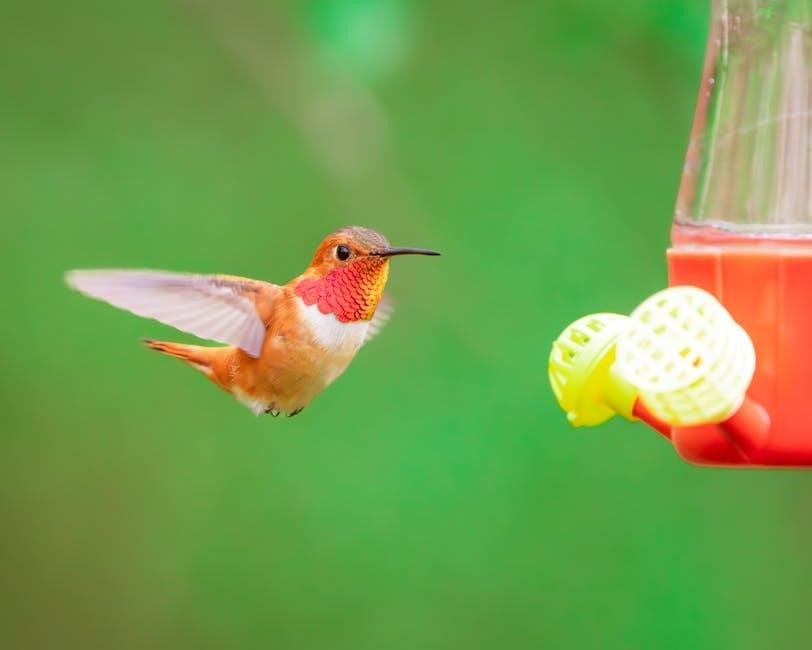Wilds of Eldraine is a fairy tale-inspired set blending classic MTG mechanics with innovative twists. This guide covers key strategies, archetypes, and card synergies to master the Quick Draft format.
Overview of the Set and Its Fairy Tale Theme
Wilds of Eldraine is a vibrant MTG set deeply rooted in fairy tale lore, blending enchanting narratives with strategic gameplay. Each color combination aligns with a classic fairy tale, such as Black-White representing Snow White, complete with cards like Glass Casket and Neva Pursued by Nightmares. The set’s design immerses players in a whimsical world where beloved stories come to life through unique mechanics and flavorful card effects. Roles, a new feature, introduce Aura tokens that shape interactions, adding depth to the fairy tale theme. With a focus on balanced yet dynamic gameplay, Wilds of Eldraine offers a diverse Limited format, appealing to both casual and competitive players. Its return to the Eldraine plane expands the fairy tale landscape, ensuring a fresh and engaging experience for draft enthusiasts.
Key Mechanics in Wilds of Eldraine Draft
Wilds of Eldraine introduces unique mechanics that enhance draft play, blending fairy tale themes with strategic depth. The Roles mechanic stands out, generating Aura tokens that impose positive or negative effects, such as the heroic Young Hero or the detrimental Cursed. These tokens add a layer of interaction, rewarding players for adapting to board states; The format also emphasizes Food tokens, which provide resource generation and synergize with cards like Hamlet Glutton. Sacrifice and +1/+1 counter themes are prevalent, with archetypes like Golgari Food and Selesnya Lifegain offering distinct playstyles. The set balances aggressive strategies, such as Boros Tokens, with controlling elements, ensuring a dynamic and versatile Limited experience. These mechanics create a fast-paced yet strategic environment, making Wilds of Eldraine a engaging draft format for players of all skill levels.

Understanding the Draft Format
Wilds of Eldraine Quick Draft is a fast-paced, balanced format with diverse playstyles; It emphasizes adaptability and strategic decision-making, offering a dynamic experience for players of all skill levels.
Preparation and Strategy for Quick Draft
Preparation and strategy are key to success in Wilds of Eldraine Quick Draft. Understanding the set’s mechanics and archetypes helps players make informed decisions. Start by analyzing the fairy tale themes associated with each color combination, as they influence card synergies. Familiarize yourself with the roles tokens and how they interact with the board. Knowing the power level of commons and uncommons is crucial for drafting effectively. Practice evaluating the strength of your picks and adjusting your strategy based on the signals from other players. Additionally, being adaptable to the meta and willing to pivot your strategy mid-draft can significantly improve your chances of building a competitive deck. Stay focused on your curve and prioritize cards that enhance your chosen archetype.
First-Pick-First-Pack Strategy
Your first-pick in the first pack sets the foundation for your draft. Focus on high-impact, versatile cards that fit multiple archetypes. Prioritize cards with strong removal, evasion, or card advantage. Rare and mythic cards are valuable, but don’t overlook powerful commons and uncommons. Pay attention to the color distribution and signals from the pack to gauge the table’s preferences. If you open a bomb rare, consider splashing it if it aligns with your strategy. However, don’t force a color early; stay flexible to adapt to the draft’s flow. A well-rounded approach ensures a solid start, allowing you to build a cohesive deck as the draft progresses. Remember, consistency is key to success in Wilds of Eldraine Quick Draft.
Reading Signals and DraftingTips

Reading signals is crucial in Wilds of Eldraine Quick Draft. Pay attention to the cards passed to you and those taken by others to gauge the table’s preferences. If high-value cards in a color are scarce, it indicates heavy drafting in that direction. Adapt by considering alternative strategies or splashing into underdrafted colors. Avoid overcommitting early to a single archetype unless signals strongly support it. Stay flexible and prioritize cards that offer versatility across multiple builds. Be mindful of the pack’s overall power level to identify opportunities. Drafting is a dynamic process, so remain attentive and adjust your strategy as the draft unfolds. By effectively reading signals, you can build a more cohesive and competitive deck.
Splashing and Color Commitment
Splashing in Wilds of Eldraine Quick Draft requires careful consideration. With the set’s emphasis on color pairs, committing to two colors is often optimal, but splashing a third can be rewarding if the payoff is significant. Evaluate the power level of splashed cards and ensure they synergize with your main colors. Cards like Food tokens or lifelink can justify splashing white, while Spells might warrant adding blue. However, avoid over-splash as it dilutes your deck’s focus. Color commitment should align with the signals received during the draft. If a color is underdrafted, it may offer opportunities for high-value picks. Balance flexibility with consistency to maximize your deck’s potential. Splashing successfully enhances your strategy, but missteps can weaken your overall build, so weigh the risks and rewards carefully.


Archetypes and Color Pairings
Wilds of Eldraine features ten distinct color pairings, each tied to a fairy tale theme. These archetypes offer diverse strategies, from aggressive decks to value-oriented builds, ensuring rich gameplay variety.
Gruul (Red-Green) ౼ Midrange and Sacrifice
Gruul decks in Wilds of Eldraine excel at midrange strategies, combining efficient creatures with sacrifice synergies. Cards like Rats and Swarm Piper enable consistent pressure and value generation. The archetype thrives on early-game aggression and mid-game trades, utilizing sacrificing effects to maintain board control. Red-Green’s ability to curve into powerful threats ensures a balanced approach, making it a popular choice for drafters seeking versatility. With a focus on creature-based strategies, Gruul offers a robust and adaptable gameplan that rewards players for understanding sacrifice mechanics and optimizing their mana curve.
Boros (Red-White) ― Aggro and Tokens
Boros decks in Wilds of Eldraine are aggressive and token-focused, leveraging low-cost creatures and anthem effects to swarm the board. Cards like Greta, Sweettooth Scourge and Twisted Sewer-Witch provide early-game momentum and token generation. The archetype excels at flooding the board with small, evasive creatures and amplifying their power with anthems. Sacrifice outlets and token doublers further enhance the strategy, allowing Boros to quickly overwhelm opponents. This fast-paced, high-pressure approach makes Boros a top choice for players who enjoy aggressive, tempo-focused gameplay. With a strong emphasis on synergy and speed, Boros rewards drafters who prioritize consistency and early-game dominance.
Selesnya (Green-White) ― Lifegain and +1/+1
Selesnya decks in Wilds of Eldraine focus on lifegain and +1/+1 counters, creating a resilient and value-oriented strategy. Cards like Neva, the Traveler and Glorifier of Dusk provide lifegain while also generating card advantage. The archetype thrives on distributing +1/+1 counters to create formidable creatures and leverage lifelink effects for sustain. Token generation and anthem effects further amplify the board presence, making Selesnya a midrange powerhouse. With a strong emphasis on defense and incremental advantage, Selesnya appeals to players who prefer a more methodical, controlling approach. By combining lifegain with creature enhancement, Selesnya builds a wall of resilience that can outlast aggressive strategies and scale into the late game with powerful synergies.
Mardu (Red-Black) ౼ Sacrifice and Removal
Mardu decks in Wilds of Eldraine excel at sacrifice synergies and removal, combining Red’s aggressive potential with Black’s removal and discard. Cards like Swarm Shambler and Mayhem Devil reward sacrificing creatures, generating value through continuous pressure. The archetype leverages cheap removal spells and creatures with deathtouch to control the board early. Sacrifice outlets and token generation amplify the strategy, allowing Mardu to maintain tempo and disrupt opponents. With a focus on low-to-the-ground creatures and efficient removal, Mardu is a formidable aggressive option that punishes slower decks. Its ability to generate card advantage through sacrifice makes it a versatile and dangerous archetype in the format, appealing to players who enjoy proactive, disruptive strategies with strong synergies.
Golgari (Green-Black) ౼ Food and Value
Golgari decks in Wilds of Eldraine revolve around Food tokens and value generation, utilizing Green’s creature-based synergy and Black’s removal. The archetype leverages cards like Hamlet Butcher and Gluttonous Troll to create and exploit Food tokens, which can be used to gain life, draw cards, or fuel powerful abilities; The focus is on mid-to-high toughness creatures that generate or consume Food, ensuring long-term card advantage. Golgari excels at grinding out games, with a mix of early defense and late-game threats. Its ability to adapt to various board states makes it a resilient choice, particularly against aggressive decks. By maximizing Food synergies, Golgari players can outlast opponents, making it a favored archetype for those who enjoy methodical, value-oriented strategies.
Orzhov (Black-White) ౼ Snow White and Removal
Orzhov decks in Wilds of Eldraine emphasize a “Snow White” theme, focusing on removal and token generation. The archetype thrives on controlling the board with efficient removal spells like Glass Casket and creatures that excel at neutralizing threats. White’s lifegain synergies complement Black’s sacrifice themes, creating a balanced strategy. The presence of Auras and token generators allows Orzhov to maintain pressure while disrupting opponents. Key cards like Neva, the Forsworn and Pursued Nightmare highlight the archetype’s ability to dominate through both offensive and defensive means. Orzhov’s strength lies in its versatility, making it a solid choice for players who prefer a mix of removal and incremental card advantage, ensuring consistent performance across various matchups in the Quick Draft format.

Azorius (Blue-White) ― Flyers and Counters
Azorius focuses on a synergy of flying creatures and counterspells, creating a potent combination of offense and defense. Blue’s card draw and counters complement White’s flyers, enabling control over the game’s tempo. Key cards like Sky Patrol and Cloudhoof Beacon exemplify this archetype’s ability to dominate the skies while disrupting opponents. The inclusion of token-generating creatures further enhances Azorius’s board presence, allowing for consistent pressure. Counterspells like Disdainful Stroke provide protection, ensuring the archetype’s threats remain unchallenged. This combination makes Azorius a formidable force in Wilds of Eldraine Quick Draft, particularly against slower or midrange decks, offering a balanced approach of aggression and protection.
Simic (Blue-Green) ౼ +1/+1 and Card Draw

Simic combines Blue’s card draw with Green’s +1/+1 counter mechanics, creating a formidable midrange strategy. Cards like Growth Spiral and Elvish Rejuvenator accelerate mana development while enabling early plays. The synergy between +1/+1 counters and card draw ensures consistent value, allowing Simic decks to outpace opponents. Key creatures such as Leafkin Avenger and Petite Sylvan provide both offensive and defensive capabilities, while Nissa’s Renewal offers late-game fuel. This archetype excels at building a strong board presence and leveraging card advantage, making it a popular choice for players seeking a balanced and consistent strategy in Wilds of Eldraine Quick Draft.
Izzet (Blue-Red) ― Spells and Burn
Izzet combines Blue’s card draw and Red’s burn potential, creating an aggressive yet versatile archetype. Cards like Lightning Ace and Gorsegner the Bloodhound highlight the synergy between direct damage and card advantage. This deck thrives on early-game tempo with cheap burn spells and efficient creatures, while late-game card draw ensures sustained pressure. The ability to generate card advantage through spells makes Izzet a formidable choice for players who enjoy a mix of aggression and strategy. Key cards like Fire Prophecy and Opt further enhance the archetype’s consistency. Izzet’s strength lies in its ability to adapt to different metas while maintaining a fast-paced, high-impact game plan.
Rakdos (Red-Black) ౼ Aggro and Sacrifice

Rakdos is a high-aggression archetype that excels at dealing direct damage and sacrificing creatures for value. Cards like Greasefang, Okiba Boss and Slaughter-Priest of Golgari exemplify the deck’s ability to swarm the board and generate card advantage through sacrifice outlets. The combination of low-toughness, high-power creatures with burn spells creates a relentless offensive strategy. Sacrifice synergies allow for efficient removal and card draw, making Rakdos a consistent performer in draft. The archetype’s strength lies in its ability to flood the board early and maintain pressure through recursive threats. With a focus on cheap, aggressive creatures and efficient removal, Rakdos rewards players who commit to a fast-paced, proactive game plan.

Drafting Key Cards and Synergies
Drafting key cards and synergies in Wilds of Eldraine involves targeting powerful commons, leveraging token generation, and utilizing removal and card draw to build cohesive, high-impact decks efficiently.
Top Commons for Each Color
Identifying top commons is crucial for success in Wilds of Eldraine Quick Draft. Each color offers standout cards: White excels with Neva, Pursued by Nightmares, providing evasion and value. Blue relies on Rats and Twisted Sewer-Witch for early-game aggression and token generation. Black utilizes Totentanz and Swarm Piper to fuel sacrifice synergies. Red focuses on Greta, Sweettooth Scourge for aggressive starts. Green leverages Hamlet Glutton and Feasting Familiar for mid-game power. Understanding these commons helps drafters build cohesive decks and adapt to table dynamics, ensuring a strong foundation for success in the format.
Uncommons That Define the Format
Uncommons in Wilds of Eldraine are pivotal, offering powerful effects that shape the draft format. Cards like Glass Casket and Neva, Pursued by Nightmares dominate in Snow White decks, providing both removal and recursion. Rats and Swarm Piper enable token generation and sacrifice synergies, while Totentanz acts as a value engine for Red-Black archetypes. Feasting Familiar and Hamlet Glutton fuel Food strategies, offering sustained card advantage. Uncommons like Lord of the Manor and Goblin Guide bolster aggressive decks, ensuring early pressure. These cards are versatile, enabling multiple playstyles and defining the metagame. Securing key uncommons early in the draft often sets the tone for success, as they provide the backbone for competitive strategies and synergies.
Rares and Mythic Rares to Watch For

Rares and Mythic Rares in Wilds of Eldraine can dramatically swing games, offering high-impact effects. Cards like Greta, Sweettooth Scourge and Lord of the Manor provide early aggression and board control. Fey Historian and Twisted Sewer-Witch enable card advantage and token generation, while Goblin Guide accelerates mana and pressure. Mythic Rares such as Neve, the Ineffable and Glass Casket offer versatile utility, with Neve excelling in Blue-White flyers and Glass Casket providing removal and recursion. These cards often define the power level of a deck, with their presence heavily influencing draft strategies. Prioritizing rares and mythic rares can elevate your draft deck, but timing their picks is crucial to avoid passing them to opponents. Recognizing their value early ensures a competitive edge in the Wilds of Eldraine format.
Artifact and Land Cards in the Draft
Artifact and land cards play a pivotal role in Wilds of Eldraine drafts, offering unique advantages. Artifacts like Rats and Totentanz enable sacrifice synergies, while Swarm Piper and Twisted Sewer-Witch facilitate token generation. Dual-color lands such as Foul Orchard and Twisted Ruin support multicolor strategies, ensuring smoother mana fixing. These cards are versatile, fitting into multiple archetypes like Golgari Food or Mardu Sacrifice. Prioritizing artifacts and lands early in the draft can provide a strong foundation for your deck, enabling key synergies and ensuring consistent mana development. Their ability to generate recurring value or fix mana issues makes them high-priority picks, especially in a format where resource efficiency is crucial.
Advanced Draft Strategies
Advanced strategies involve refining deck builds, adapting to metagames, and optimizing card synergies. Experience and data guide decisions, ensuring a competitive edge in Wilds of Eldraine drafts effectively.
When to Remove the Chaff
Identifying and cutting weaker cards, or “chaff,” is crucial for refining your deck. In Wilds of Eldraine, focus on removing low-impact creatures and spells that don’t synergize with your strategy. Pay attention to the overall power level of your deck and consider the metagame. If your deck is heavy on creatures, evaluate whether each one provides sufficient value. Similarly, assess whether your removal and trick spells are efficient enough. Cutting chaff allows you to streamline your deck, ensuring higher consistency and better gameplay. Timing is key—remove chaff during the drafting process and adjust as you see which cards perform well. This practice elevates your deck’s overall potency and adaptability in competitive drafts.
How to Play Around the Meta
Adapting to the metagame is essential for success in Wilds of Eldraine Quick Draft. As the format evolves, dominant strategies emerge, and being prepared to counter them is key. Early in the format, aggressive decks like Rx (red-green) aggro and Golgari Food decks were prevalent, but as players adapted, control decks with countermagic and removal began to rise. Pay attention to the cards being drafted around you and adjust your strategy accordingly. If the meta shifts toward aggressive decks, prioritize survivability and removal. Conversely, if control decks dominate, focus on card advantage and resilience. Reading signals during the draft can help anticipate meta trends, allowing you to refine your deck to counter popular strategies effectively. Adaptability ensures your deck remains competitive in a dynamic environment.
Win Conditions and Curve Considerations
Win conditions in Wilds of Eldraine Quick Draft often revolve around aggressive threats or resilient value engines. Understanding your deck’s curve is critical to ensure you can deploy impactful spells at every stage of the game. Aggressive decks prioritize low-to-the-ground creatures that can quickly close out games, while midrange and control decks rely on higher-impact cards that dominate the late game. The format’s balance allows for a variety of viable win conditions, from token swarms to powerful creatures with evasion or resilience. When building your deck, consider the distribution of mana costs to maintain consistency and avoid gaps in your curve. A well-tuned curve ensures you can develop your board smoothly, addressing the metagame’s demands while staying adaptable to different matchups. This balance is key to constructing a competitive and cohesive draft deck in Wilds of Eldraine.
Sideboarding and Mulligan Decisions
Sideboarding in Wilds of Eldraine Quick Draft requires careful consideration of the metagame and your opponent’s strategy. Focus on swapping cards that underperform against specific matchups while preserving your deck’s core game plan. Mulligan decisions are equally crucial, especially in a fast-paced format. Aggressive decks often mulligan for hands with early creatures and removal, while midrange or control decks prioritize curve-friendly starts with interaction. Be wary of keeping hands with too many high-cost spells or lands, as this can lead to slow development. Adaptability is key; practice recognizing when to mulligan and how to adjust your sideboard based on the opponent’s archetype. A well-timed mulligan or sideboard swap can drastically improve your chances of success in competitive matches.
Mastering Wilds of Eldraine Quick Draft requires adaptability, understanding its unique mechanics, and practicing key strategies. Stay flexible, focus on synergies, and refine your approach to succeed in this engaging format.
Putting It All Together ― Final Draft Strategy
To excel in Wilds of Eldraine Quick Draft, combine a deep understanding of its fairy tale-inspired mechanics with a focus on archetype synergy. Prioritize early picks that define your deck’s direction, whether it’s aggressive strategies like Boros or midrange builds like Golgari. Adaptability is key—be prepared to shift colors if signals indicate a crowded meta. Pay attention to card quality and curve balance, ensuring your deck can perform across multiple turns. Key cards like Greta, Sweettooth Scourge and Swarm Piper can elevate your strategy. Practice reading signals and avoid overcommitting to a single archetype too early. Finally, refine your mulligan decisions and sideboarding plans to optimize for the expected matchups. With these principles, you’ll navigate the format confidently and maximize your chances of success;
Advanced Tips for Experienced Players
For experienced players, mastering Wilds of Eldraine Quick Draft involves refining nuanced strategies. Focus on identifying high-impact synergies early, such as combining Greta, Sweettooth Scourge with token generators or leveraging Food engines in Golgari. Pay close attention to draft signals to anticipate opponents’ archetypes and adjust your picks accordingly. Splashing a third color can be rewarding but requires careful planning to maintain a cohesive strategy; Additionally, prioritize cards that provide card advantage or disrupt opponents’ plans, such as countermagic or removal. Experienced players should also consider the metagame, adapting their archetype choices based on what’s prevalent. Finally, practice tight mulligan decisions and sequence your plays to maximize tempo. These advanced tactics will help you outmaneuver opponents and elevate your drafting prowess in Wilds of Eldraine.
The Importance of Adaptability in Draft
Adaptability is crucial in Wilds of Eldraine Quick Draft, as the format’s balance can shift based on the metagame. Early on, Rx aggro dominated, but Golgari Food emerged as a counter, highlighting the need to pivot strategies. Players must remain flexible, adjusting their archetype choices and card picks as the draft progresses. For instance, if Ux Control becomes prevalent, focusing on disruptive elements like Cursed tokens or countermagic can be advantageous. Similarly, recognizing when to switch from aggressive to midrange strategies ensures longevity in matches. Staying attuned to the evolving draft environment and willingness to change plans are key to success. Adaptability not only enhances draft performance but also keeps gameplay dynamic and engaging in Wilds of Eldraine.
